New
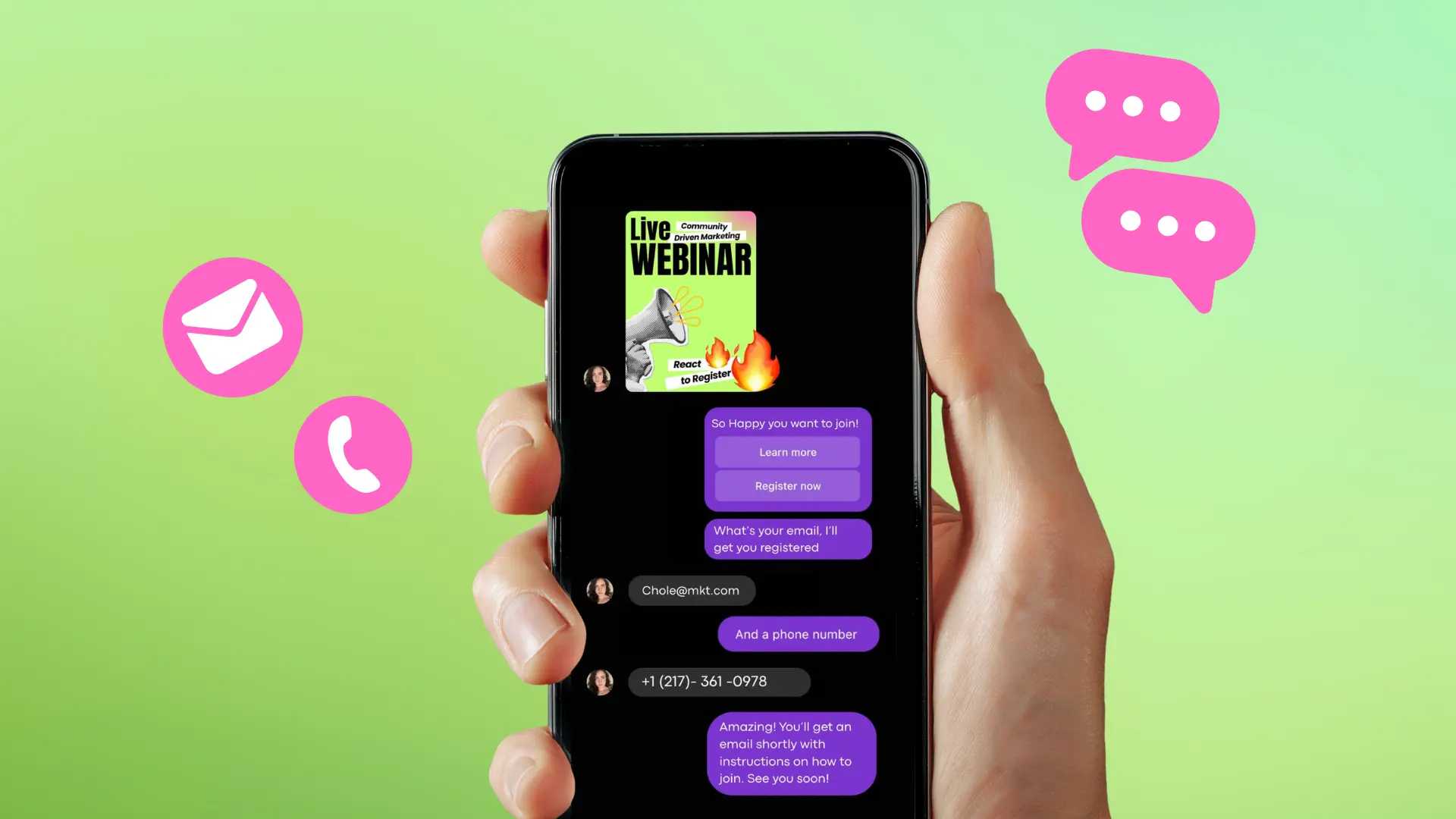
Turn Your DMs Into Lead Gen!
Learn how to collect lead data from your DMs such as email addresses, phone numbers, and more right from your social inbox. If you are not yet automating your DMs your competitors are outpacing you.
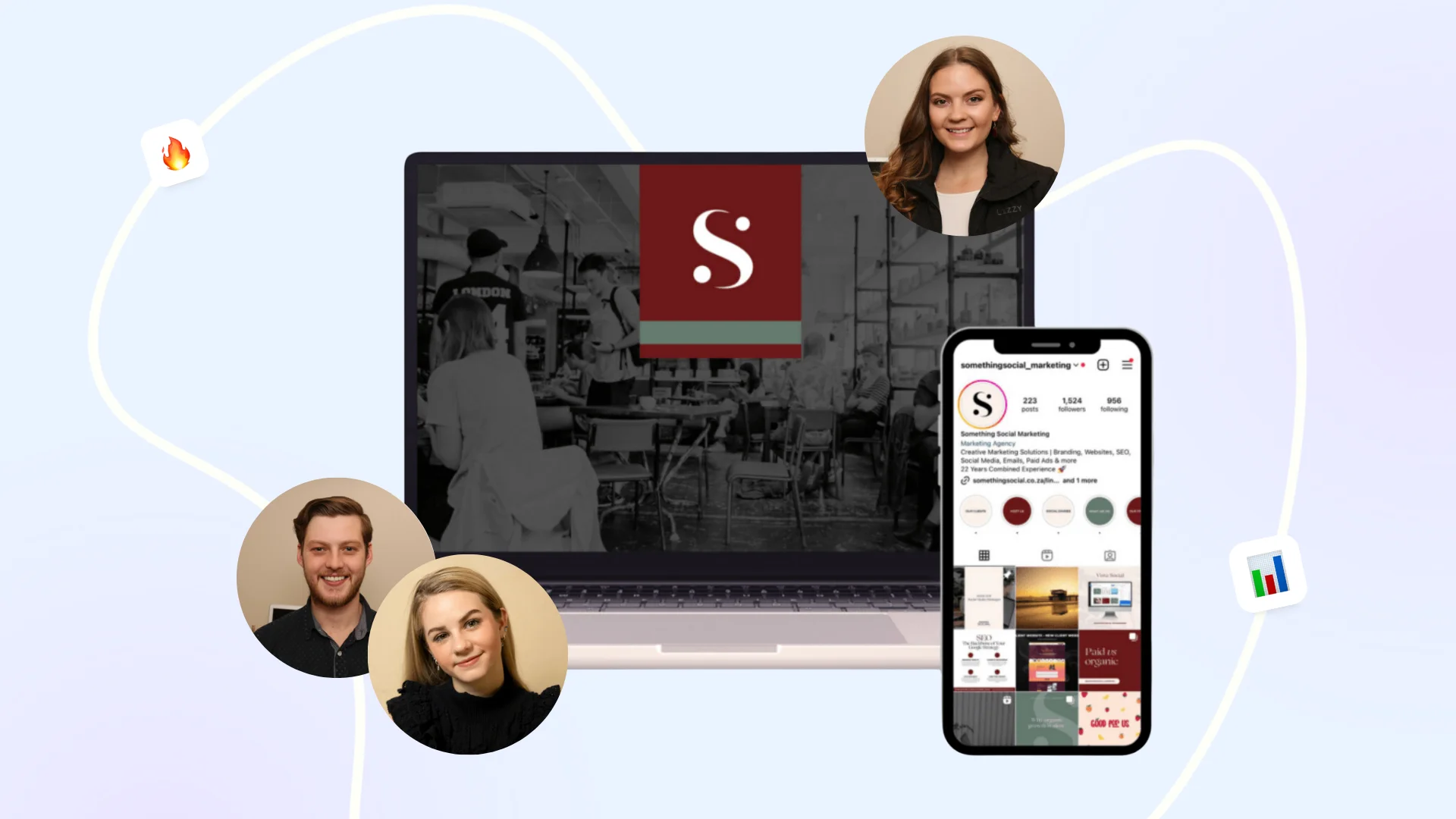
How Something Social Saved 75% of Their Time and Increased Revenue by 15%
See how a fast-growing agency improved operations, cut down hours of manual work, and unlocked new revenue opportunities with Vista Social.
New
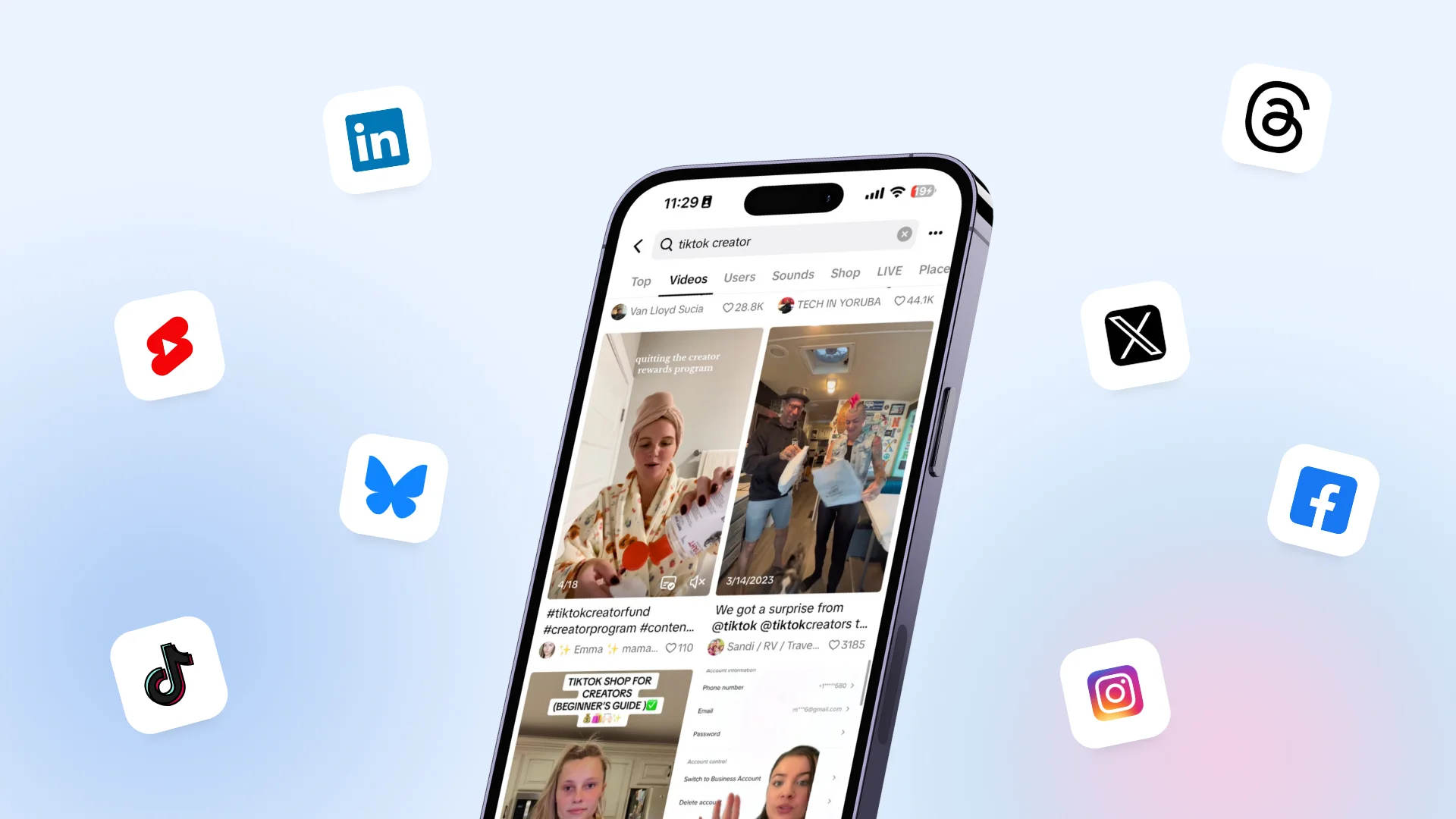
50 Unique Social Media Ideas for Consistent Content Creation
Discover 50 unique social media post ideas to engage your audience, grow your brand, and maintain a consistent content strategy with ease!
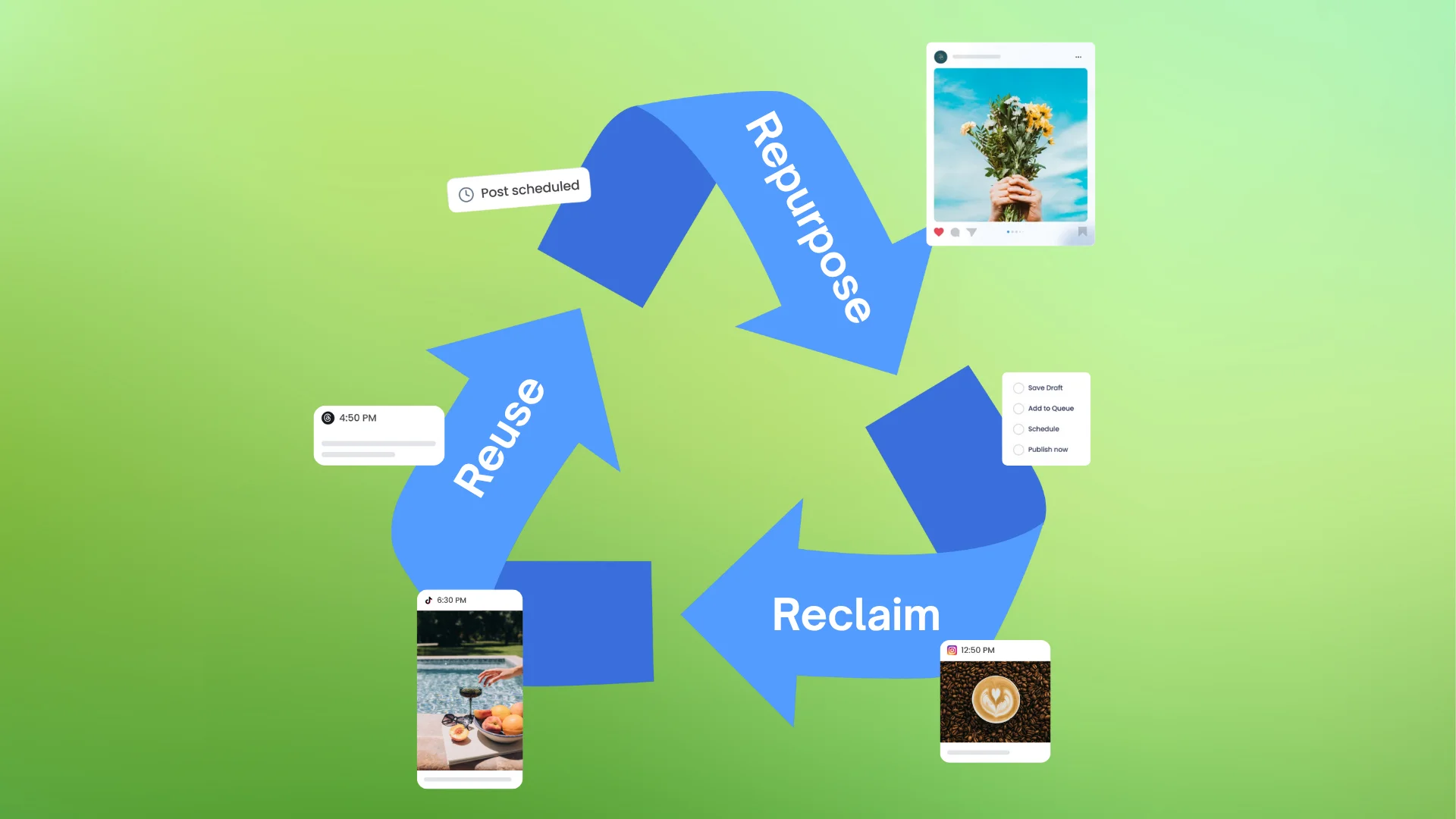
Mastering Content Reuse: The Key to a Consistent and Sustainable Posting Strategy
Published on August 14, 2025
12 min to read
Predictive Analytics for Social Media: Forecasting Trend Performance
Summarize with AI
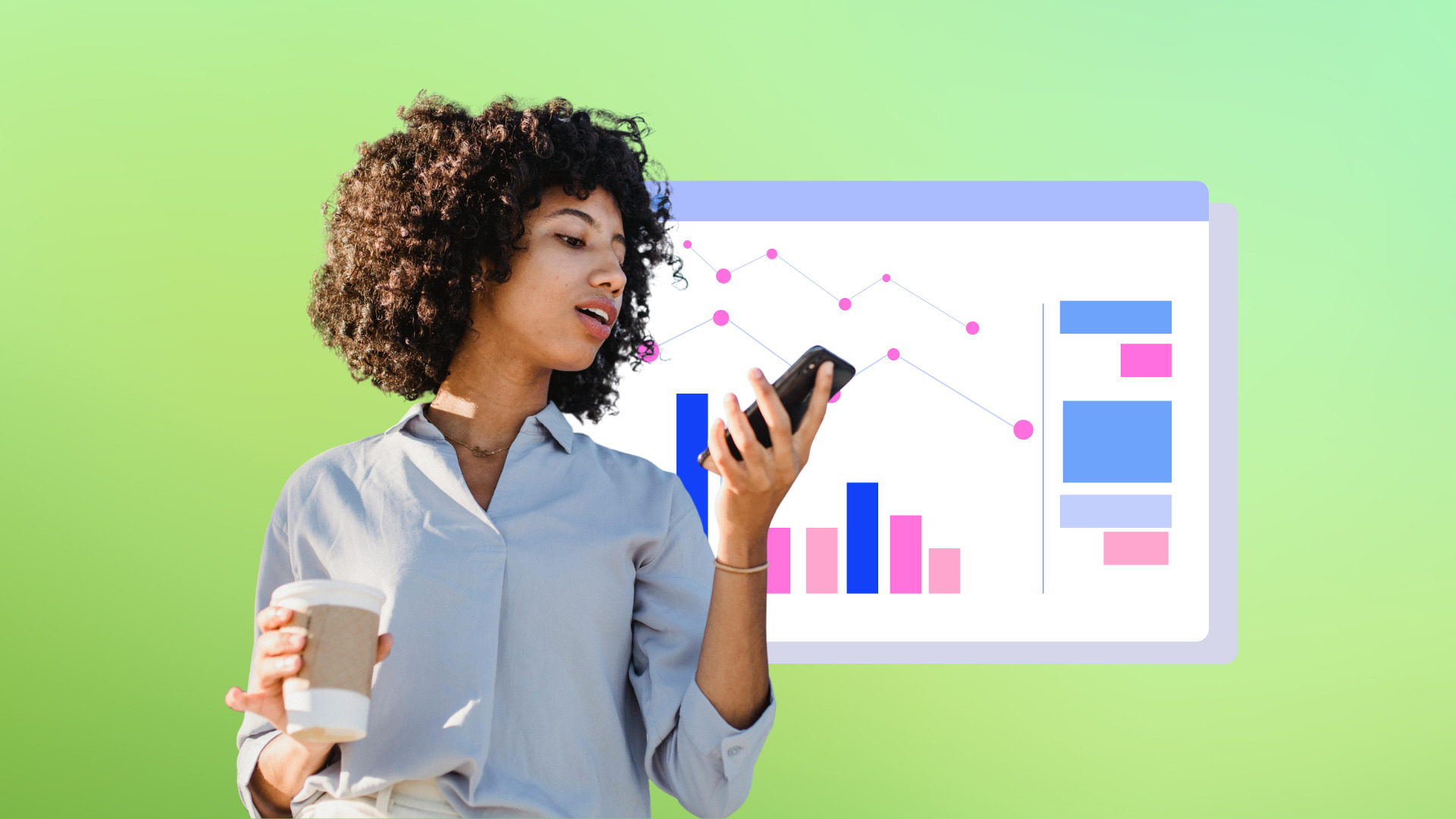

Table of Content

Predictive analytics for social media can be just the secret weapon you didn’t know you needed, until now.
Let’s be real: Keeping up with trends, audience shifts, and ever-changing platform algorithms can feel like trying to hit a moving target… in the dark.
You’re constantly asking, “Will this post or campaign go viral or totally flop?”
Instead of relying on gut feelings or past posts, predictive analytics helps you forecast what’s likely to perform well before you hit publish.
It’s like having a crystal ball for your content and social media marketing strategy, minus the guesswork, plus a lot more results.
In this post, we’ll explore how you can leverage predictive analytics to stay one step ahead, forecasting trend performance so you can focus on what moves the needle.
Ready? Let’s go.
Table of contents
What is predictive analytics for social media?
Predictive analytics for social media is the process of using data, algorithms, and machine learning to forecast how content, campaigns, or future trends will perform before they go live.
Instead of relying on trial and error, it gives you data based on patterns from the past.
Predictive analytics can show what’s likely to resonate with your clients’ audiences, which content types will gain traction, and which trends are worth jumping on.
It can turn your social strategy from reactive to proactive, helping you make smarter moves, plan with confidence, and stay ahead of the curve.
Whether you’re optimizing your posting schedule, choosing content formats, or deciding which campaigns to prioritize, predictive analytics helps you cut through the noise and focus on what actually works.
Why predictive analytics for social media is crucial for social media managers
Below are several benefits of predictive analytics, including why it should be part of your social media toolkit and strategy.
Make smarter and data-backed decisions
Forget guesswork.
Predictive analytics gives you the power to make decisions with confidence, not just intuition.
It analyzes your clients’ past social media content performance based on engagement, reach, click-throughs, and more, to forecast content that resonates in the future.
With this, you can build campaigns and content calendars that are strategically aligned with your audience’s actual behavior, instead of throwing spaghetti at the wall and hoping something sticks.
Saves you time
Let’s face it, social media management is fast-paced and often overwhelming.
Predictive analytics helps you cut through the noise by pointing you toward what’s most likely to perform before you waste time experimenting.
Instead of running dozens of A/B tests, scrambling to fix underperforming posts, or endlessly tweaking captions, you can spend your time on high-impact work.
You can use predictive analytics insights to refine your clients’ brand voices, plan long-term campaigns, or, you know, not skip lunch again.
It’s about working smarter, not harder.
Helps you prioritize what actually works
When you’re managing multiple social media platforms (YouTube, Instagram, TikTok, etc.), content formats, and campaigns, it’s easy to feel pulled in every direction.
Must read: YouTube Shorts Analytics Explained: An A–Z Breakdown
Predictive analytics helps you focus on what actually drives results.
It can identify which platforms give you the best return, which content themes are most effective, and which trends are gaining momentum.
That way, you’re not chasing every shiny new thing but doubling down on the strategies that deliver real value and trimming the rest.
Adapts to changing algorithms
If there’s one constant in social media, it’s change.
TikTok, YouTube, Instagram, and other social media platform algorithms evolve, engagement patterns shift, and yesterday’s winning tactic can quickly become irrelevant.
Must read: 15 TikTok Analytics Tools Worth Trying this 2025
Predictive analytics tools are designed to keep learning from fresh data, so your strategy evolves as the platforms do.
Whether Instagram prioritizes Reels this month or LinkedIn suddenly boosts document posts, predictive systems adjust and help you stay aligned with the latest trends, so you’re not playing catch-up after every update.
Must read: LinkedIn Analytics: Complete Guide [w/ metrics, tools, etc.]
Boosts ROI and campaign performance
Your job is to deliver results and impact, not just engagement.
Predictive analytics helps you sharpen your strategy so you’re posting the right content to the right people at the right time.
By improving how you target, schedule, and create content, you increase the likelihood of hitting Key Performance Indicators (KPIs), whether that’s conversions, sales, or brand awareness.
More efficient content = better ROI.
And better ROI?
That means more value for your clients and more proof that your strategy is working.
How predictive analytics for social media works
At its core, predictive analytics uses past behavior to make future predictions.
Put simply, predictive analytics helps you uncover insights to turn likes, shares, comments, and other data points into smart forecasts that guide your social media strategy.
Below is a simplified breakdown of how it works.
1. Collects historical data
Every social media post you publish generates a trail of valuable data, such as likes, shares, saves, comments, reach, impressions, click-through rates, watch time, follower growth, and more.
Social media analytics tools with predictive analytics start by aggregating all this data across Instagram, Facebook, TikTok, LinkedIn, X (Twitter), and other platforms you connect to.
It doesn’t stop at your clients’ brand data either.
Advanced tools may also pull in industry benchmarks, trending topics, or even competitor insights to get a fuller picture of what’s happening in your clients’ niches.
The goal is to build a solid foundation of historical performance data to uncover what has worked well and what hasn’t.
2. Identifies patterns and trends
Once the data is collected, the tool analyzes it to identify recurring behaviors and patterns.
For instance:
- Do engagement rates spike when you post Instagram Reels to your clients’ feeds at 7 p.m.?
- Do product tip videos outperform behind-the-scenes content?
- Are your clients’ audiences more active during weekday mornings or weekends?
Predictive analytics tools can also detect seasonal trends, such as annual spikes around holidays, product launches, or industry events.
These patterns help paint a clearer picture of how your clients’ audiences behave, what they respond to, and when they’re most likely to engage.
It’s like looking in the rearview mirror to find clues that help you drive forward more effectively. 🚘
3. Applies machine learning models
Machine learning algorithms sift through the uncovered data patterns and run simulations to predict future outcomes.
These models can analyze social media variables at once, including the following:
- Post format
- Caption length
- Hashtag usage
- Posting time
- Past engagement
- Audience demographics
- Content themes
Unlike manual data analysis, which relies on human intuition and a few KPIs, machine learning uses complex models to uncover hidden correlations.
For instance, predictive analytics tools can analyze why a short-form video with a how-to format may perform better than a meme or quote post for your clients’ audiences.
The predictions aren’t random guesses but calculated outcomes based on real, data-driven evidence.
4. Generates forecasts and insights
After crunching the numbers, predictive analytics tools provide actionable forecasts that help shape your next moves.
These can include:
- Best time slots to post for maximum visibility
- Ideal content formats, such as carousels, Reels, and polls
- Topics that are likely to trend in your clients’ niches
- Audience segments most likely to engage
- Projected engagement or reach for an upcoming marketing campaign
- Top-performing influencers that will likely be the best collaborators for your clients’ brands
Must read: 13 Influencer Analytics to Boost Your ROI (Free & Paid)
Instead of relying on trial and error, you get clear, proactive recommendations that improve your odds of success before publishing anything.
Think of it as a strategy coach built into your analytics dashboard that guides your next step with data-backed confidence.
5. Continuously learns and improves
Predictive analytics isn’t a one-and-done deal but an ongoing process.
As you create new content and gather fresh engagement data, your predictive analytics tool’s system updates its models and refines its forecasts.
The more you post and test, the smarter it gets, adapting to changes in:
- Audience behavior
- Social media algorithms
- TikTok, Snapchat, YouTube, and other platform features and trends
- Brand goals or messaging
Must read: Snapchat Analytics Ultimate Guide: What to Track, FAQs, Etc.
The continuous posting, testing, and learning help make your predictive analysis highly responsive, especially in a fast-paced environment where yesterday’s trend is today’s old news.
In a nutshell, the more you use it, the better it gets at helping you win.
Predictive analytics for social media: Key metrics to track for effective trend performance forecasting
Do you want to stop guessing and start predicting what content will hit?
Check out the metrics that fuel accurate, data-backed insights below.
Engagement rate
The engagement rate is your north star metric for audience interaction.
It measures how often people like, comment, share, or save your content relative to the number of people who saw it.
Unlike vanity metrics (such as raw likes), engagement rate gives you a clearer picture of how relevant and resonant your content is.
Tracking the metric for predictive analytics is crucial because social media content with consistently high engagement rates signals strong audience alignment.
It can also offer a reliable template for your future posts.
For example, if your “tips and tricks” Reels always get high engagement, predictive tools will flag that format as a strong performer.
Reach and impressions
Reach shows the number of unique users who saw your content.
Impressions count the total number of times it appeared on screens (including multiple views by the same person).
A sudden spike in reach and impressions can be an early indicator that a post or trend is gaining traction.
Try Vista Social for Free
A social media management platform that actually helps you grow with easy-to-use content planning, scheduling, engagement and analytics tools.
Get Started NowThe metrics matter because predictive tools use reach trends to gauge the visibility potential of similar future content, especially when tied to your new topics or hashtags.
Must read: Hashtag Analytics Guide: With Tips, Tools, and Strategies
For instance, when a post tied to a trending audio or hashtag sees three times your client’s normal reach, your analytics tool flags this pattern as one to replicate.
Click-through rate
The click-through rate (CTR) tracks how often people take action on your client’s content by clicking a link, button, or sticker.
The metric shows how effectively your client’s content drives the next step, whether visiting your client’s website, product page, or lead capture form.
A high CTR indicates strong interest and persuasive content, both of which are signals of trend-worthy or conversion-friendly posts.
For instance, if your clients’ Instagram Stories with “swipe up” links to product demos consistently get clicks, similar content will get prioritized by prediction models.
Must read: 12 Instagram Analytics Tools for 2025
Follower growth trends
The follower growth trend tracks how your clients’ audiences grow (or shrink) over time.
Short-term spikes often correlate with specific posts or campaigns, while long-term growth trends indicate sustained content success.
Predictive analytics connects follower growth trends to the types of content or campaigns that drive audience expansion, helping you scale your content strategy faster.
For example, if your client gains 500 followers after a behind-the-scenes Reel, your predictive analytics tool links this surge to similar upcoming content.
Post type and format performance
Each social media content format, such as Reels, carousels, Stories, Lives, and GIFs, performs differently depending on the platform (LinkedIn, YouTube, etc), audience, and trend cycle.
Must read: 15 LinkedIn Analytics Tools to Boost Your Marketing ROI
Tracking how each format performs gives you a clear sense of what’s working right now.
Predictive tools use this to recommend which format gives you the best chance of future engagement based on the social media platform (such as Pinterest or Snapchat) and audience behavior.
Must read: How to Use Pinterest Analytics to Drive Traffic and Sales
For example, your client’s carousels have slowed down in reach, but Reels are surging.
Your predictive analytics tool will likely suggest a format shift in your upcoming content plan to improve results.
Time-of-day and day-of-week engagement
When you post can be just as important as what you post.
The time-of-day and day-of-week engagement metric shows the hours and days your clients’ audiences are most likely to engage, based on past behavior.
Predictive analytics uses these patterns to forecast the best posting windows.
This way, you can publish or schedule your clients’ social media content to show up when their audiences are actually online and ready to interact.
Suppose your client’s weekday morning Facebook posts get higher saves and shares than evening ones.
Must read: 10 Facebook Analytics Tools Used by Top Marketing Agencies
The predictive analytics tool can use this data to adjust your suggested posting times accordingly.
Hashtag performance
Tracking how individual hashtags contribute to post reach and engagement helps you identify which ones are tied to active conversations or just appear effective.
Hashtags often act as early indicators of trends.
Predictive models track their performance to help you jump on rising topics before they peak, boosting the chances of your clients’ content going viral.
Let’s say your clients’ Instagram posts with #SocialMediaTips suddenly get 30% more engagement.
Predictive analytics tools can flag the hashtags as high-value for the coming week, giving you a good idea of what tags to use to ensure engagement.
Sentiment analysis
Sentiment analysis goes beyond whether people are talking about your clients’ social media content, but reveals how they feel about it.
AI features in predictive analytics tools can scan comments, captions, and DMs to determine whether audience sentiment is positive, neutral, or negative.
Sentiment analysis helps predict audience reaction, not just reach, which is crucial when handling sensitive topics or brand messaging.
For example, your client’s viral meme post could get a lot of comments, but most of them are complaints.
Analytics tools can mark this as risky, so you know whether to keep creating similar posts or ditch the content entirely.
Audience demographics and behavior
Understanding who your clients’ audiences are based on their age, location, gender, interests, and online behavior gives predictive models the context they need to tailor suggestions more effectively.
Remember, different audiences respond to various trends.
Knowing your core audience helps you forecast which types of trends are relevant for your clients’ brands.
For example, if Gen Z followers are your client’s top engagers, predictive tools will lean into short-form, audio-driven, or humor-based trends.
Content decay rate
The content decay rate tracks how long your content continues to get engagement after it’s posted.
Fast-decaying posts lose steam quickly, while slow-decaying content continues to generate value over time.
Predictive analytics uses the content decay rate to identify which posts are evergreen versus trend-dependent.
Having these insights helps you balance your calendar and stretch the life of your clients’ high-performing social media content.
For instance, if your client’s “how-to” video keeps getting comments weeks after posting, your tool tags it as evergreen and recommends similar topics for lasting impact.
Predictive analytics for social media using Vista Social
Imagine being able to see into the future of your social media strategy.
That’s the power of predictive analytics—and yes, you can do it right inside Vista Social. 👀✨
Vista Social is designed as an all-in-one social media management platform, but you can leverage its analytics features when implementing predictive analytics to extract data-driven insights.
You can get predictive insights from Vista Social’s top posting times, content trends, and sentiment shifts to plan smarter social strategies.
The platform offers key features that can help you with social media predictive analytics.
You can track historical performance across all your social channels in one dashboard.
Spot patterns, such as which days get the most engagement via the Facebook Page metrics and report.
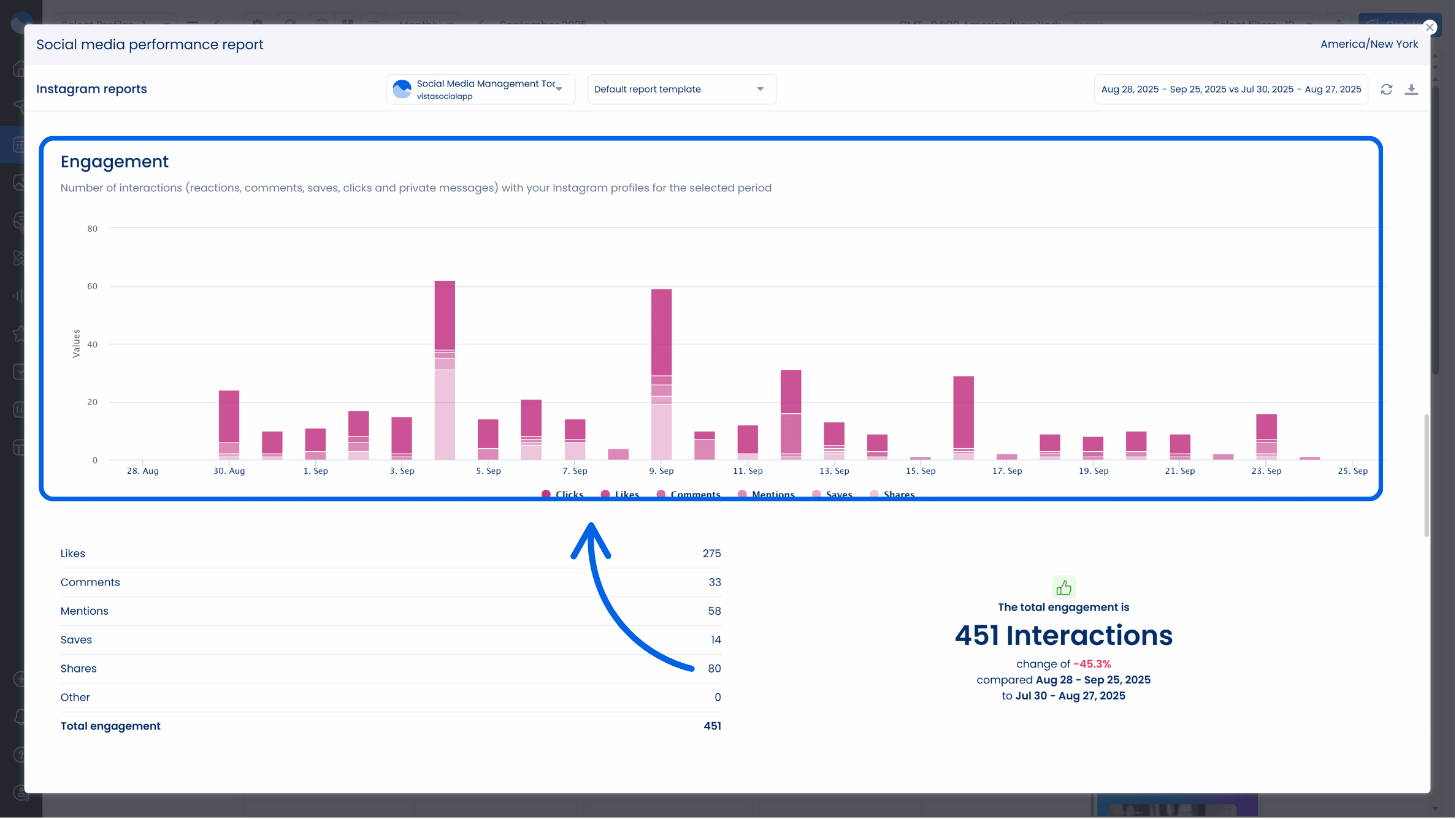
You can see how your clients’ posts perform over time, not just in the first few hours.
The predictive trends can tell you when to recycle high-performing content or when a post may need a boost with paid support.
The Post Performance report can also show you which content formats consistently perform better.
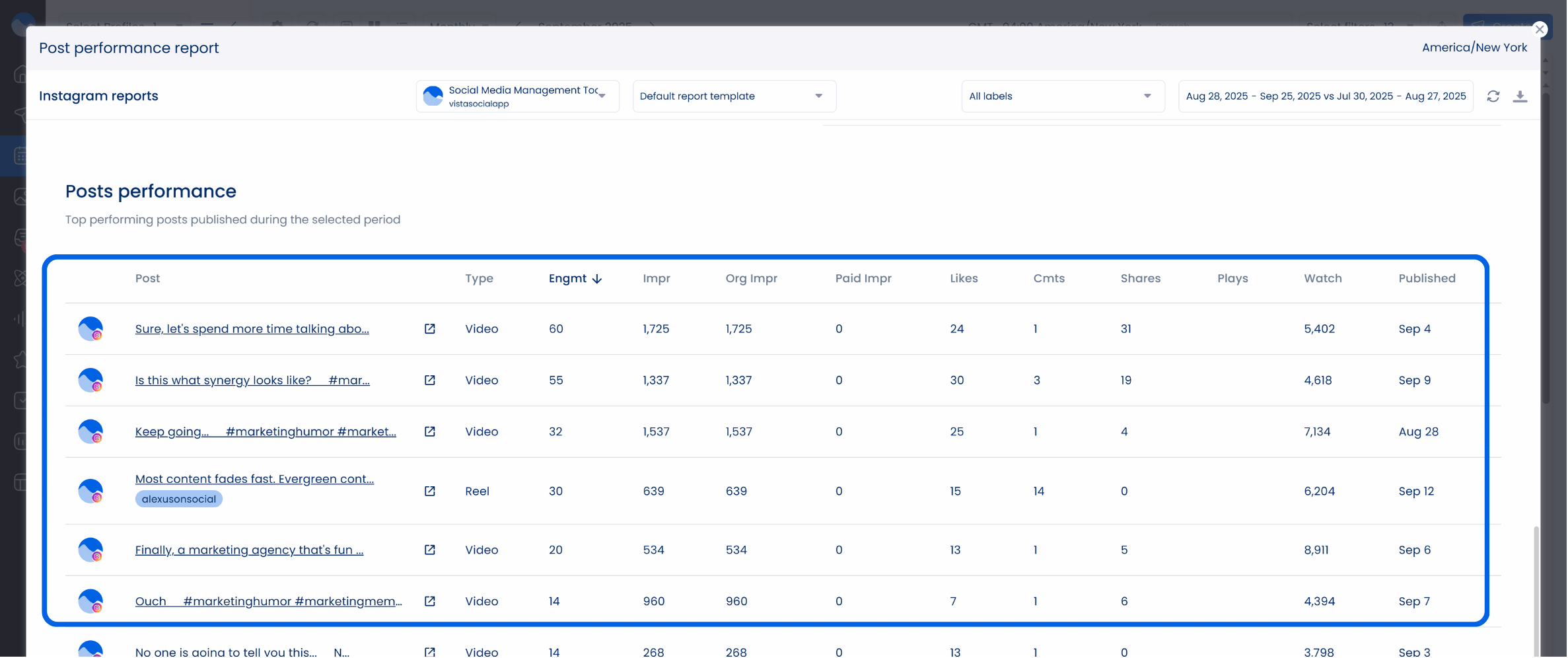
The platform tracks and analyzes other key metrics, such as:
- Social profile performance
- Audience (follower) growth
- New followers
- Daily engagement by network
- Brand awareness score
- Post impressions
- Number of interactions generated by hashtags
- Engagement rate
- Organic and paid impressions
- Etc.
When scheduling content, Vista Social uses AI to recommend the best times to post based on your clients’ past content performance data and engagement trends.
The tool can calculate and show your best times to post for seamless automated or manual publishing.
After creating and customizing your post in the social media publishing feature, select Schedule or Publish now.
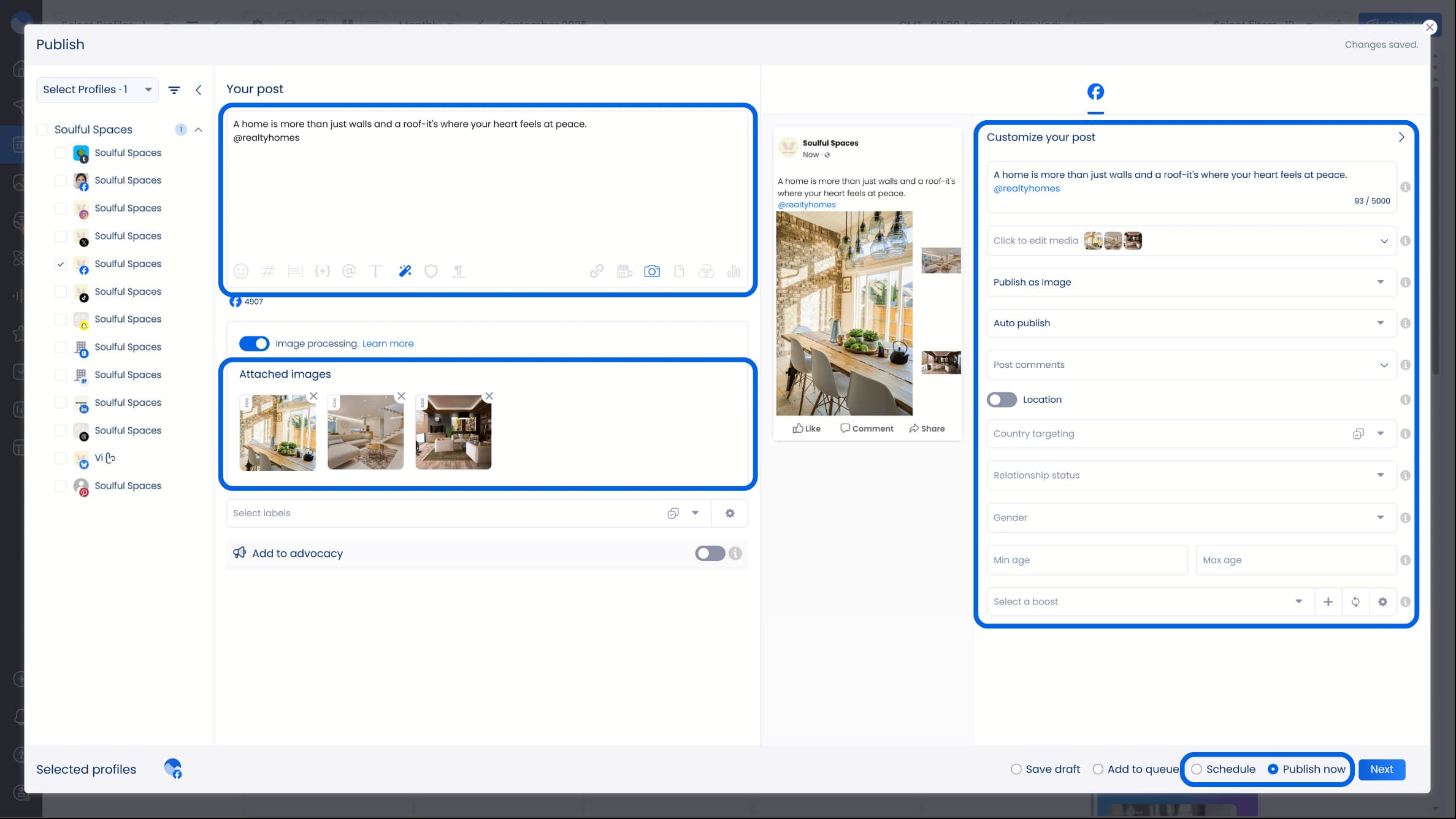
Click the Show optimal times option, and you’ll see the best times to post suggestions.

Select a posting time from the suggestions, and Vista Social will automatically publish your post at that time.
The suggestions are calculated based on content velocity, engagement patterns, and other factors to detect the most active times for authentic and optimal engagement.
It’s like having a tiny data scientist built into your publishing flow.
Need to compare performance across various profiles, networks, or timeframes?
Vista Social’s competitor report can make this easier.
The report can show you side-by-side data of your clients’ and their competitors’ social media performance, including the following metrics.
- Number of fans
- Fan growth
- Daily and hourly publishing behavior
- Audience growth
- Total and relative engagement
- Hashtag usage
- Best performing posts
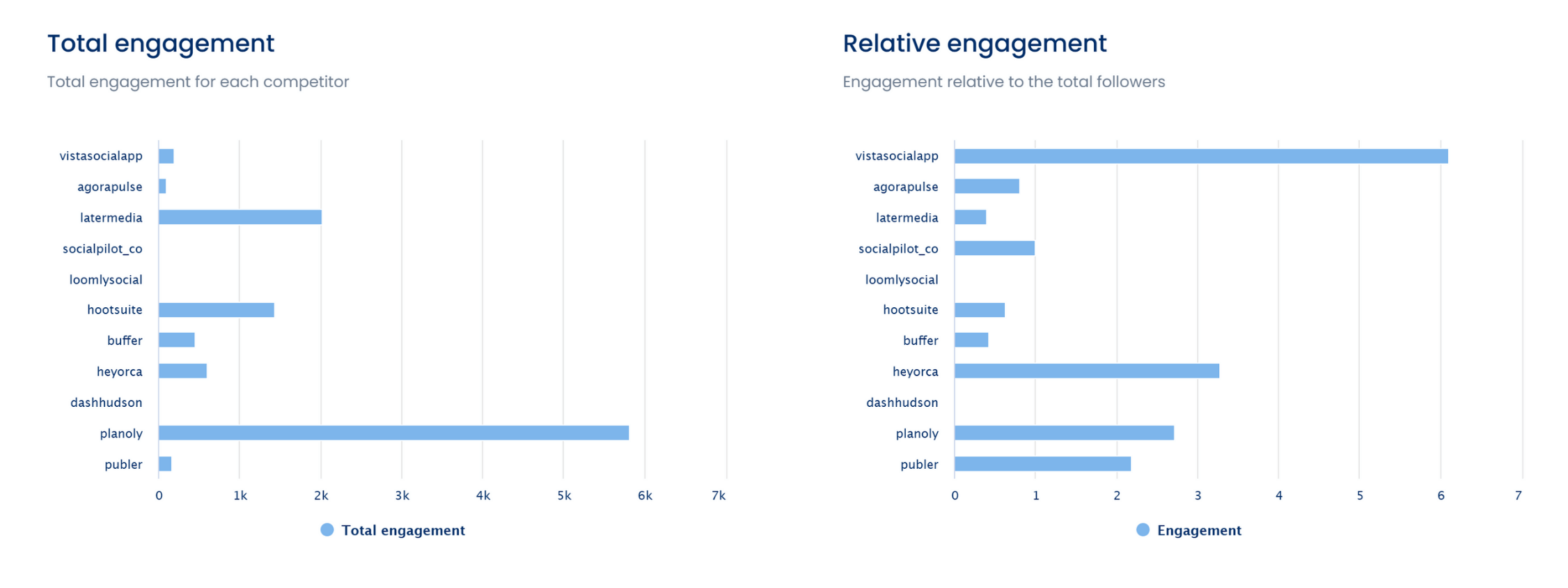
The report can help you identify what’s improving, what’s stalling, and where to pivot your social media strategy—perfect for planning your clients’ next big content push.
Another handy Vista Social feature you can use to help with predictive analytics is the social media listening tool, which includes sentiment analysis.
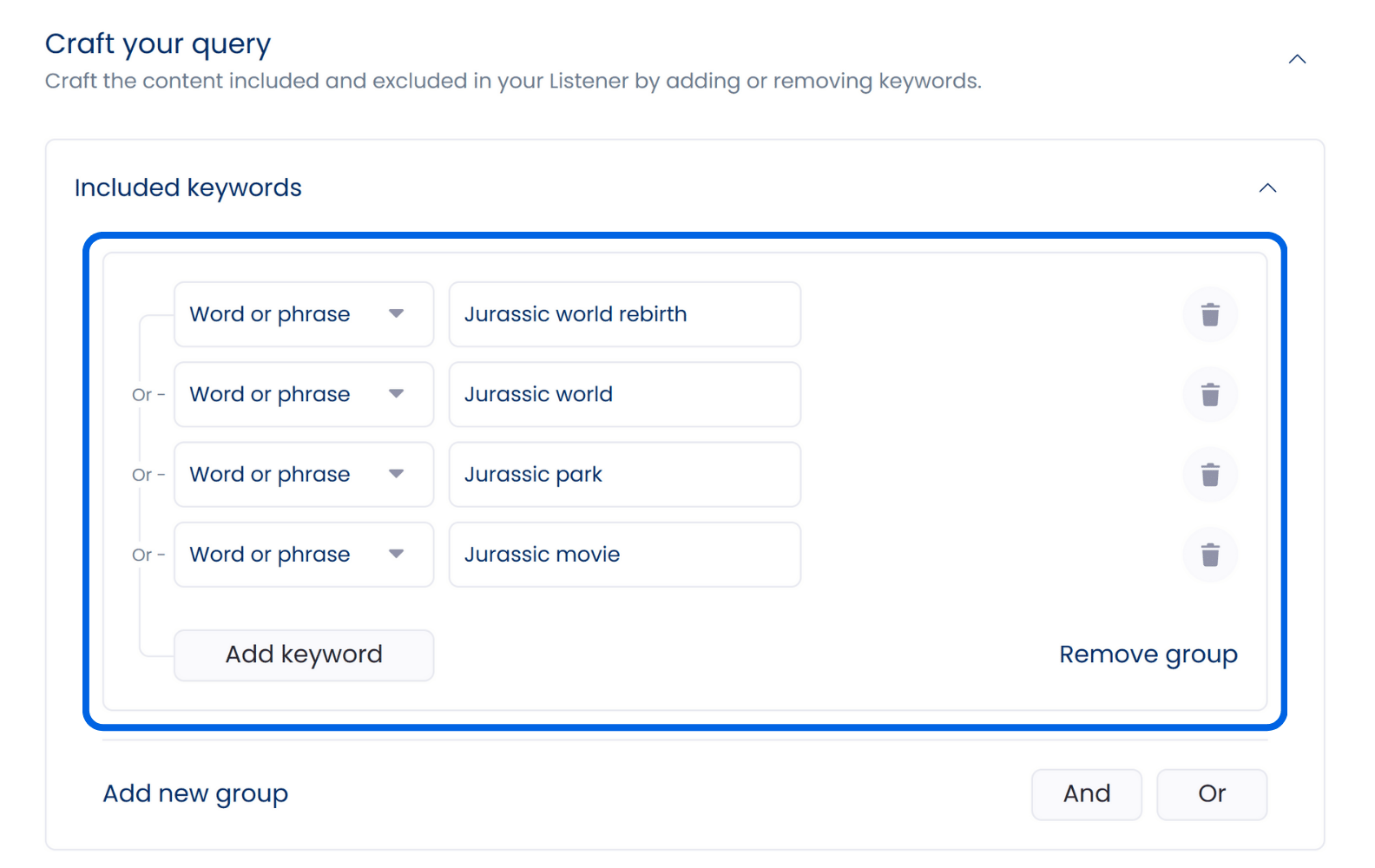
Must read: Social Listening Analytics: A Complete Guide
The tool allows you to set up listeners that pull conversations around your clients’ brands and other relevant keywords so you can spot emerging topics and conversations early.
Unlock the power of predictive analytics for social media
With social media predictive analytics, you can make informed decisions based on real data to boost engagement, optimize content posting timing, and create content that connects.
Ready to turn those social media insights into impact?
Create your Vista Social account today and forecast your way to smarter social media marketing strategies.
Predictive analytics for social media FAQs
How can predictive analytics help your social media strategy?
Predictive analytics can help you uncover valuable data insights so you can post smarter. It can help you identify the best times, formats, and topics to engage your clients’ audiences and drive results, based on what’s worked before.
Do you need technical skills to use predictive analytics?
Not at all. Modern tools such as Vista Social make predictive insights easy to understand and act on, no data science background required.
Can predictive analytics show you what content will go viral?
Predictive analytics can’t guarantee virality, but it can show which types of content are most likely to get high engagement based on past performance.
About the Author
Content Writer
Jimmy Rodela is a social media and content marketing consultant with over 9 years of experience, with work appearing on sites such as Business.com, Yahoo, SEMRush, and SearchEnginePeople. He specializes in social media, content marketing, SaaS, small business strategy, marketing automation, and content development.
Read with AI
Save time reading this article using your favorite AI tool
Summarize with AI
Never Miss a Trend
Our newsletter is packed with the hottest posts and latest news in social media.
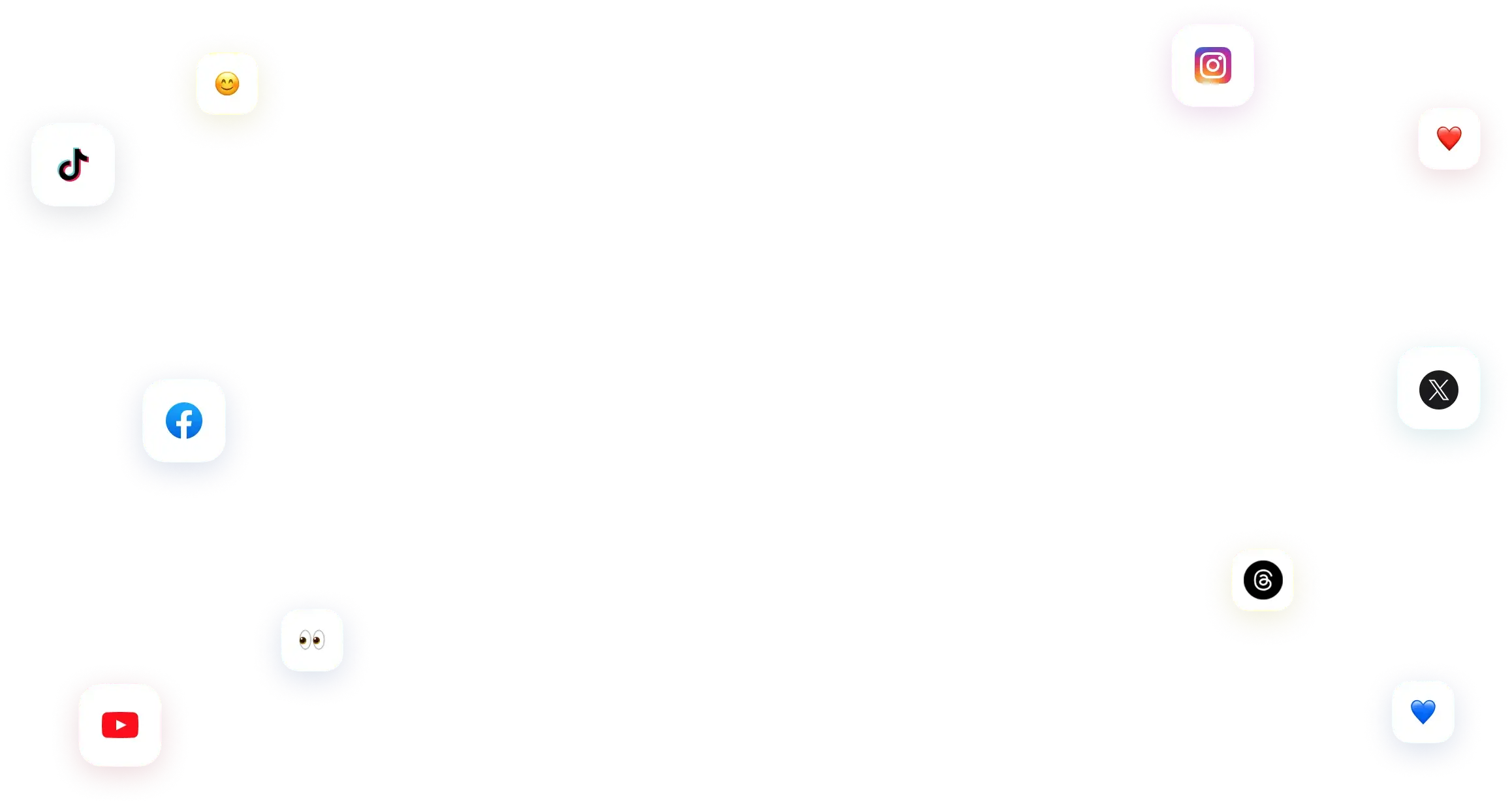
You have many things to do.
Let us help you with social media.
Use our free plan to build momentum for your social media presence.
Or skip ahead and try our paid plan to scale your social media efforts.
P.S. It will be a piece of cake 🍰 with Vista Social
Subscribe to our Newsletter!
To stay updated on the latest and greatest Social Media news. We promise not to spam you!


